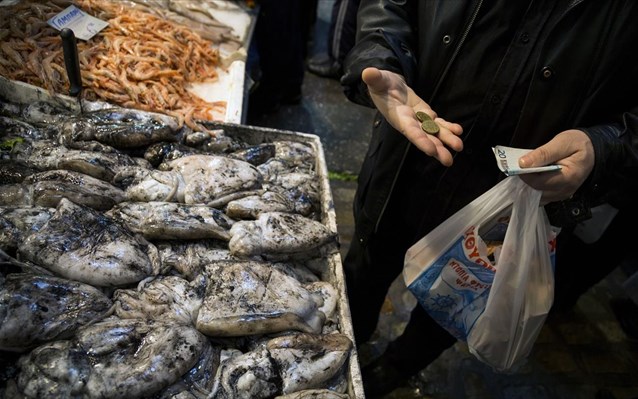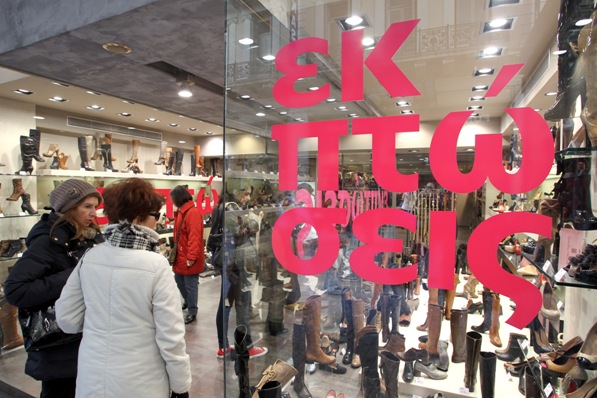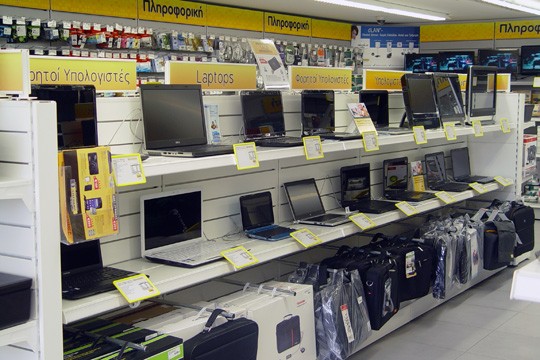www.apokoronaslife.gr
Households have diminished almost all costs because of declining incomes. According to a survey of family budgets in 2012 by the Greek Statistical Institute ELSTAT, the average monthly household expenditure in 2012 was 1,637.10 euro representing a decrease of 10.2% compared to 2011.
Compared to 2009, when the average monthly costs were 2,401.44 euro (at constant prices in 2012), there is a reduction of 31.8% (at constant prices) and 22.7% at current prices.
In connection with the past study, the greatest decrease in current prices is in clothing and footwear (15.3%), other goods and services (15.3%), hotels, cafes and restaurants (15.1%), recreation and culture (15%), durable goods (13.7%), transport (12.6%), education (10%), and health (8.6%).

There is a smaller reduction in terms of food expenditure (7.5%), communication (7.5%), alcohol and tobacco (5.7%), as well as housing (1.3%).
In terms of food, a reduction in monthly costs is observed for mineral water, soft drinks and juices (19.3%), sugar, jam, honey, pastry and confectionery (18.4%), coffee, tea and cocoa (13.9%), fish (11.2%), fruit (8.5%), meat (7.6%), vegetables (7%), other food (5.1%), flour, bread and grain products (4.1%), eggs and dairy products (4%), and fats (0.7%).

In the period 2008-2012, expenditure on clothing and footwear as a percentage of the family budget continuously declined (from 8.2% in 2008 to 5.8% in 2012), as well as on durable goods (7.1% in 2008 to 5.8% in 2012).
Compared to 2011, a significant increase of own produce was observed - from 0.7% in 2011 to 1.1% in 2012.
The average monthly amount of fuel, liquefied gas, natural gas and electricity used by a household has decreased by 14.7%, 7.9%, 2.1% and 0.5% respectively, while the average monthly amount of solid fuels (firewood, pellets, etc.) has increased by 46.4%.
The largest share of expenditures of the average family budget includes food (20.1%), followed by housing (13.9%) and transport (12.8%), while services and education represent the lowest share of expenditures (3 5%).
Households living in rural areas spend 1,298.23 euro per month, while those in cities 1,717.06 euro.

As for the living conditions, the study showed the following:
a) An increased number of households that have the following:
- A computer in the main residence (+4.2%), at least one mobile phone (+1.2%), and an individual garage (+1.8%)
b) A decreased number of households that:
- Use central heating as the main source of heating (22.6%); have or hire a second or urban dwelling (-2.8%); have at least one car (-0.6%). Also, the number of cars has decreased by 3.1%.
As for inequality, the share of the average equivalent expenditures (purchases) of the richest 20% of the population was 5.9 times greater than the share of expenditures of the poorest 20% of the population (5.5 in 2011).
Poor households spend 33.3% of their monthly budget on food, while the rest spend 19.2%.
Because of the composition of poor households (elderly, uninsured, etc.), healthcare costs reach 7.3% of the budget, compared to 6.5% for the rest.
At European level, consumption patterns are as follows:
In Greece, Estonia and Latvia, the largest share of expenditures of the average household budget includes food. Consumption patterns differ for Spain and Italy, where higher costs associated with housing have been reported. The cost of education ranges from 0.7% of the average household budget in Estonia to 3.5% in Greece.
Greece and Latvia have the largest private health expenditure - 6.4% and 5.9% of the average monthly household budget, respectively.